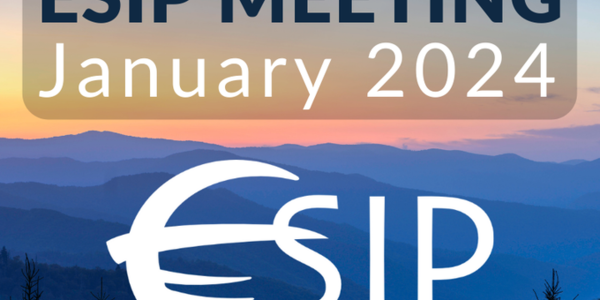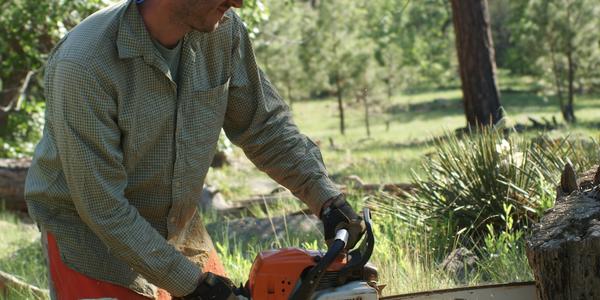
Here at NCEI, we aren’t just data—we are people. In our Humans of NCEI series, meet the awesome minds that manage one of the largest archives of atmospheric, coastal, geophysical, and oceanic research in the world. Get to know Dr. Barry Eakins, Cooperative Institute for Research in Environmental Sciences (CIRES) researcher and Chief Scientist for the Marine Geology and Geophysics Section.
What is your job title?
My job title is Chief Scientist for the Marine Geology and Geophysics Section.
What is your specific area of expertise?
My area of expertise is marine seafloor geophysics, which includes mapping and understanding the geology and tectonic history of the sea floor.
What was your first job? How did it prepare you for your current position?
My first real career-related job was as a sonar technician in the U.S. Navy. I spent six years learning about oceanography, maintaining electronic equipment, and “hunting” for submarines. I got to travel the world, from Virginia to the Mediterranean and Black Sea, as well as the Caribbean. I also headed west from San Diego to Hawaii, Hong Kong, the Straits of Malacca, and the Persian Gulf. I was able to use the G.I. Bill to help pay for my undergraduate B.A. education and part of grad school. I learned to love being out at sea.
How did you end up at NCEI?
As an undergrad at University of Colorado Boulder, I worked at NCEI (then the National Geophysical Data Center) digitizing paper hydrographic soundings, where I learned about the value of data management. I built and maintained connections with the staff and jumped at the chance to come work with them again when an opportunity opened up in my field of expertise after I’d earned my PhD.
What does a usual workday look like for you?
A typical workday involves doing a mix of project planning and problem solving. In essence, helping others on my teams be more productive in their tasks. I also try to carve out time for my own tasks.
What question are you asked most often when someone finds out what you do? How do you respond?
How did someone who studies the ocean floor end up in Colorado? My answer is that the NCEI Colorado office holds the premiere archive of national and global marine geophysical data, and thus is the ideal place to work and utilize the data to explore the deep ocean realm.
What sort of training and education would one need for your job?
To do my job well requires a postgraduate degree of some type, as that is where students learn how to think independently and communicate their results to others. Leadership, the “ability to get things done through others'', and project management are also super important.
What inspired you to pursue a career in your field?
What most inspired me to pursue my career was the realization while in college that I could apply my Navy sonar training to mapping the ocean floor and I get to go to sea.
What projects are you working on now? Are there any upcoming projects that you are excited about?
We are currently wrapping up a major, decades-long project to determine and establish the outer limits of the U.S. Extended Continental Shelf, in accordance with international law. This project will result in expanding the area of seafloor that the United States will have jurisdictional rights to for conservation or management purposes. This area is nearly 1 million square kilometers, which is roughly twice the size of California or half the size of the Louisiana Purchase. Our next project is to gather data to help the United States work with the international community to identify areas in the high seas – beyond national jurisdiction – where marine protected areas could be established to help protect biodiversity in the ocean realm.
What is your favorite aspect of your job?
I work with great people doing really cool seafloor science.
What challenges have you had to deal with in your career?
Probably the biggest challenge I’ve faced in my career is communicating well with others. I have come to appreciate that more and more over the course of my career. A colleague of mine years ago had a banner in her office of a quote attributed to George Bernard Shaw – “The single biggest problem with communication is the illusion that it has taken place.” I see this occurring frequently: misunderstandings, assumptions made, lack of clarity, etc. Much of my work revolves around effectively sharing information with others, so communication is key.
Who are you outside of your career?
Outside of work, I am a father to an extraordinary daughter and a runner. I am also heavily involved with the multiple sclerosis community, having been diagnosed three years ago after experiencing difficulties running a half marathon in Nevada. While I can’t run half marathons anymore, I still intend to run a race in all 50 states, as well as Washington D.C. and Puerto Rico.
Is there anything else you would like people to know about you?
I believe in the value of others. Each of us has their own dreams, ideas, opinions, experiences, and perspectives, and those are valuable to hear and appreciate. Children in particular, are precious, each and every one of them. I learned this from my daughter when she was a baby in my arms.
Favorite food and beverage?
Favorite beverages are coffee (morning) and beer (late afternoon or early evening). Favorite food is probably curry, though everything from fettuccine alfredo to Greek salads to most Mexican foods (spice!) are great!




